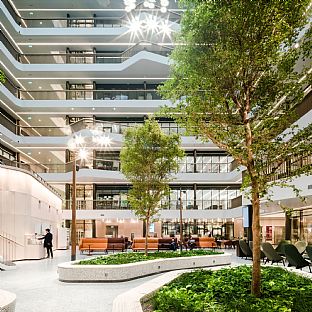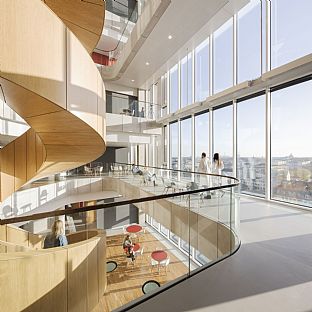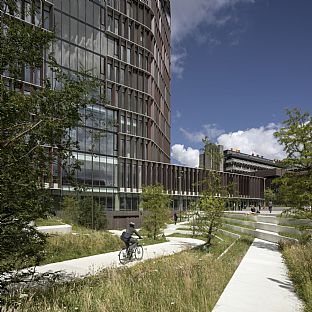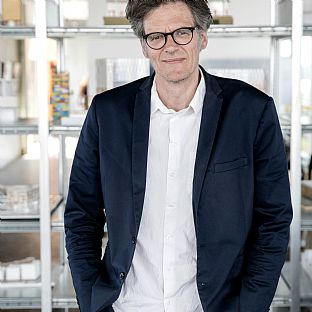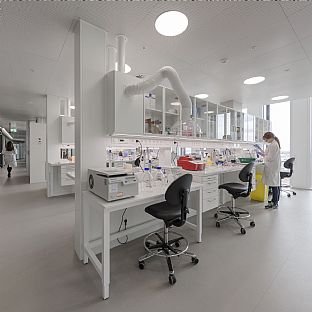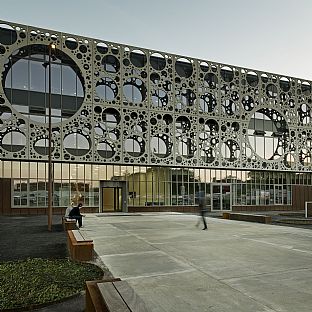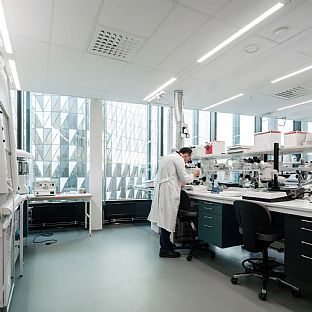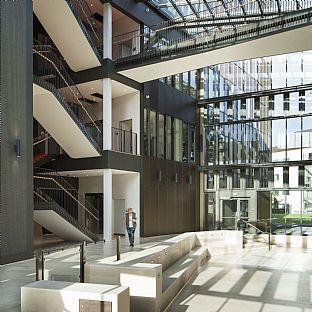Integration of the surrounding community
When working with large institutions like research facilities, or healthcare buildings, it is crucial to establish an involvement and synergy with the surrounding community, landscape, and public realm.
The better the synergy and involvement is with the community, the easier we can succeed in creating a building that embraces openness and provides quality for the community. This can be done by involving spaces and attractions in the building that extend beyond the building’s own residents and creates a natural and general accessibility for the public, says Klavs Hyttel.
At the Karolinska Institute in Stockholm the openness of the new laboratory building Biomedicum, has created a transparent, inviting ground floor, with public access to the atrium, as well as a café and public exhibition spaces. Links through the local park were established to strengthen public access to the institute, making Biomedicum a pivotal point in the area. This has created a distinctive icon of world class research, for which the Karolinska Institute is known.
The Maersk Tower is located in central Copenhagen, it has thus been important to ensure that the building both connects to its surroundings, and stands out by contributing to its lively neighborhood. Here every walk of life can meet, and there is a strong and welcoming connection between society and science. With its inviting, sustainable campus park and open square at the main entrance, the Maersk Tower is fully integrated with its surrounding neighborhood.
It is a big day for the University of Copenhagen, but it is also a very big day for Copenhagen as a city because the Maersk Tower is a gift to research, knowledge, and education. But it is also a big gift to the citizens of Copenhagen because this is a beautiful tower and it also gives something to the city, with its ground floor and gardens, and that we are very happy about, says Frank Jensen, Mayor of Copenhagen Municipality.
The Maersk Tower is publicly accessible during opening hours, with cycle and walking paths crossing the base of the building, thus promoting social sustainability as well as integrating and connecting with its surroundings.
